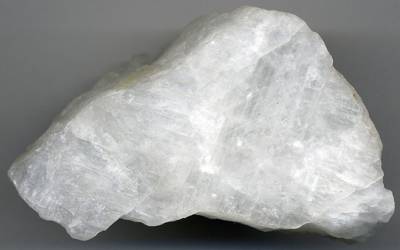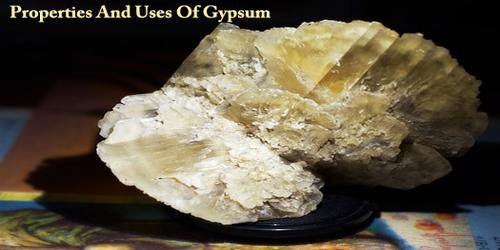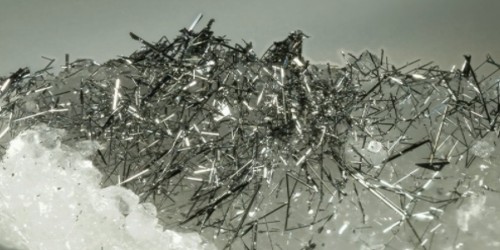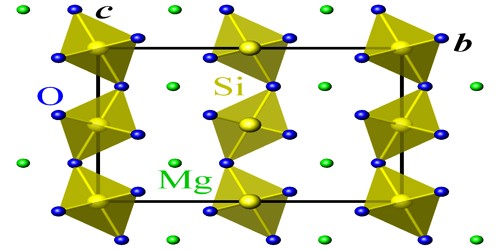Cryolite (Na3AlF6, sodium hexafluoroaluminate) is an uncommon mineral identified with the once large deposit at Ivigtût on the west coast of Greenland, depleted by 1987. It is usually lightly colored and is commonly associated with contrasting dark brownish yellow Siderite. Now it is too rare to be used for this purpose and sodium aluminum fluoride is produced artificially to fill the void.
Cryolite was first described in 1798 by Danish veterinarian and physician Peder Christian Abildgaard (1740-1801); it was obtained from a deposit of it in Ivigtut and nearby Arsuk Fjord, Southwest Greenland.
General Information
- Category: Halide Mineral
- Formula: Na3AlF6
- Crystal system: Monoclinic
- Crystal class: Prismatic (2/m) (same H-M symbol)

Properties
Cryolite occurs as glassy, colorless, white-reddish to gray-black prismatic monoclinic crystals. It has a Mohs hardness of 2.5 to 3 and a specific gravity of about 2.95 to 3.0. It is translucent to transparent with a very low refractive index of about 1.34, which is very close to that of water; thus if immersed in water, cryolite becomes essentially invisible.
- Formula mass: 209.9 g mol-1
- Color: Colorless to white, also brownish, reddish and rarely black
- Crystal habit: Usually massive, coarsely granular.
- Cleavage: None observed
- Fracture: Uneven
- Tenacity: Brittle
- Mohs scale hardness: 2.5 to 3
- Luster: Vitreous to greasy, pearly on {001}
- Streak: White
- Diaphaneity: Transparent to translucent
- Specific gravity: 2.95 to 3.0.
Occurrence
Cryolite is an unusual mineral with an interesting history. It was commercially mined in large quantities in Greenland since the mid-1800’s.
Cryolite has also been reported at Pikes Peak, Colorado; Mont Saint-Hilaire, Quebec; and at Miass, Russia. It is also known in small quantities in Brazil, the Czech Republic, Namibia, Norway, Ukraine, and several American states.
Information Source:
















